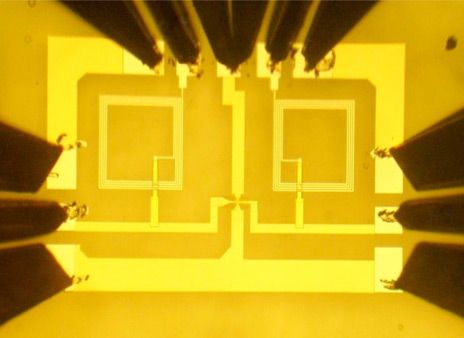IBM researchers have built the first integrated circuit (IC) based on a graphene transistor—another step toward overcoming the limits of silicon and a potential path to flexible electronics.
The circuit, built on a wafer of silicon carbide, consists of field-effect transistors (FETs) made of graphene, a highly conductive chicken-wire-like arrangement of carbon that's a single atomic layer thick. The IC also includes metallic structures, such as on-chip inductors and the transistors' sources and drains. The work is described in this week's issue of Science. Researchers say that graphene, which has the potential to make transistors that operate at terahertz speeds, could one day supplant silicon as the basis for computer chips.
Several groups have built transistors out of graphene; the IBM team, led by Phaedon Avouris at the Thomas J. Watson Research Center, demonstrated one last year that operated at 100 gigahertz—more than twice as fast as a silicon transistor of comparable dimensions. But as Keith Jenkins, one of the scientists involved in the new research, points out, "a transistor by itself is no good unless you connect it to something."

